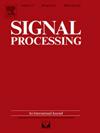Quaternion-based deep image prior with regularization by denoising for color image restoration
IF 3.4
2区 工程技术
Q2 ENGINEERING, ELECTRICAL & ELECTRONIC
引用次数: 0
Abstract
Deep image prior (DIP) has demonstrated remarkable efficacy in addressing various imaging inverse problems by capitalizing on the inherent biases of deep convolutional architectures to implicitly regularize the solutions. However, its application to color images has been hampered by the conventional DIP method’s treatment of color channels in isolation, ignoring their important inter-channel correlations. To mitigate this limitation, we extend the DIP framework from the real domain to the quaternion domain, introducing a novel quaternion-based deep image prior (QDIP) model specifically tailored for color image restoration. Moreover, to enhance the recovery performance of QDIP and alleviate its susceptibility to the unfavorable overfitting issue, we propose incorporating the concept of regularization by denoising (RED). This approach leverages existing denoisers to regularize inverse problems and integrates the RED scheme into our QDIP model. Extensive experiments on color image denoising, deblurring, and super-resolution demonstrate that the proposed QDIP and QDIP-RED algorithms perform competitively with many state-of-the-art alternatives, both in quantitative and qualitative assessments. The code and data are available at the website: https://github.com/qiuxuanzhizi/QDIP-RED.
求助全文
约1分钟内获得全文
求助全文
来源期刊

Signal Processing
工程技术-工程:电子与电气
CiteScore
9.20
自引率
9.10%
发文量
309
审稿时长
41 days
期刊介绍:
Signal Processing incorporates all aspects of the theory and practice of signal processing. It features original research work, tutorial and review articles, and accounts of practical developments. It is intended for a rapid dissemination of knowledge and experience to engineers and scientists working in the research, development or practical application of signal processing.
Subject areas covered by the journal include: Signal Theory; Stochastic Processes; Detection and Estimation; Spectral Analysis; Filtering; Signal Processing Systems; Software Developments; Image Processing; Pattern Recognition; Optical Signal Processing; Digital Signal Processing; Multi-dimensional Signal Processing; Communication Signal Processing; Biomedical Signal Processing; Geophysical and Astrophysical Signal Processing; Earth Resources Signal Processing; Acoustic and Vibration Signal Processing; Data Processing; Remote Sensing; Signal Processing Technology; Radar Signal Processing; Sonar Signal Processing; Industrial Applications; New Applications.
 求助内容:
求助内容: 应助结果提醒方式:
应助结果提醒方式:


